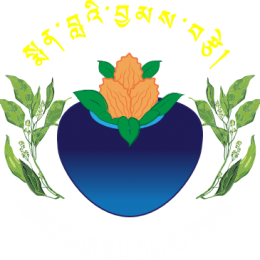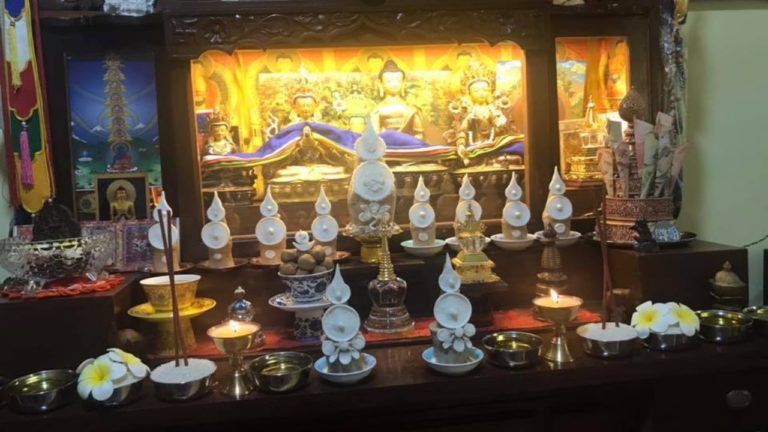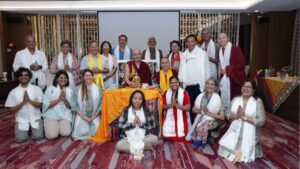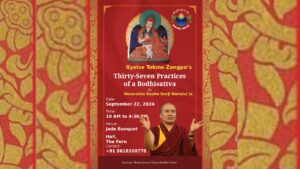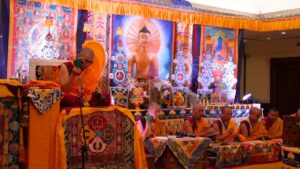A puja in my Buddhist tradition is a ceremony that includes reflection, chanting and offerings that deepen appreciation of The Buddha and his teachings.
It moves through seven stages which include gratitude, confession and reverence.
The Sanskrit word puja simply “reverence, honour, homage, adoration, or worship”, so a Puja is a ceremony that enables us to create the highest merit by making actual and visualized offerings, with the bodhicitta motivation, to the highest objects of offering, the Guru and the Triple Gem – the Buddha, Dharma and Sangha. That merit is the basis for achieving every good thing up to and including enlightenment.
According to Buddhism, the world in which we live and all that happens to us is a result of our past actions. Past harmful actions create unhappy results and skillful actions create happy results. One way to purify obstacles we experience due to our past harmful action is through prayers and pujas. A puja is a special ceremony in which prayers are offered to the Buddhas to request their blessings or invoke their help.
The power of prayers derives from the sincere motivation of the person asking for prayers, as well as the pure mind of the persons performing the prayers. It is said that prayers performed by ordained ones are especially powerful and effective as they are done on the basis of pure morality. But most importantly, making offerings to the different manifestations of enlightened beings, and to the sangha community generates and increases merit, our positive potential. Merit is needed to have success in all activities.
Puja is important as it is carried out both at home and in the temple. Buddhists use a variety of different methods in their devotional practice. Examples are:
- Mantras – Buddhists may chant repetitively, as this is a form of mediation.
Chanting – People may sing the scriptures.
- Mala – People may use a string of beads to help them focus during worship.
- Meditation – People may use meditation to open themselves to a higher state of awareness. Meditation is central to Buddhism.
- Bowing – Mahayana Buddhists often bow as a sign of respect.
- Offerings – People may leave gifts as a mark of respect and reverence to the Buddha. These gifts may include flowers, which are beautiful but fade and serve as a reminder of the impermanence of things. They may also include candles, which are a mark of light and wisdom.
Pujas are performed to avert and clear the three types of obstacles which arise due to the lack of merit, which prevent us from achieving our worldly and spiritual goals. Removing these obstacles will help us to achieve happiness and good fortune in all our activities.
How to request a Puja
While some prayers are of universal benefit, there are others that help with specific problems. It is always advisable to ask a lama or other knowledgeable person for advise on what puja is suitable for one’s specific situation or problem.
There are three types of obstacles.
- Worldly obstacles – affecting our day to day life, relationships, business, and finances.
- Inner obstacles – affecting mental and physical health in the form of strong emotions, confusion, and associated physical problems.
- Secret obstacles – obstructing the attainment of wisdom, experienced as difficulties in Dharma practice.
Pujas can be performed for various purposes:
- For the dying – to help pacify their mind, and decrease fear during the time of death.
- For the deceased – to bless and guide their mind to a higher state of rebirth and liberation.
- For the sickness – to remove obstacles to mental and physical health.
- For the success in one’s activities –to remove obstacles to success in all activities, be they worldly or spiritual.
